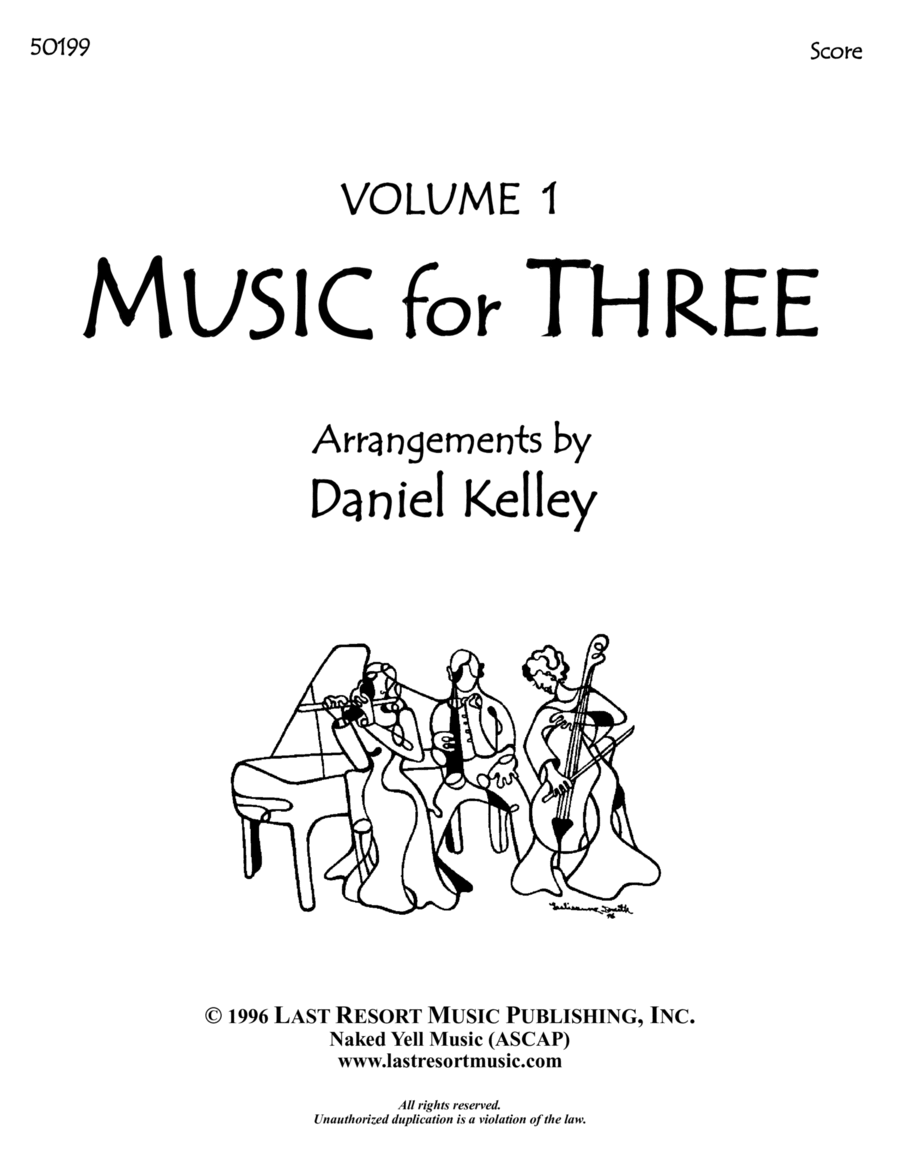Small Ensemble - Level 5 - Digital Download SKU: A0.720843 Composed by Various. Arranged by Daniel Kelley. Baroque,Classical,Instructional,Romantic Period,Wedding. Score and parts. 83 pages. Last Resort Music Publishing #329230. Published by Last Resort Music Publishing (A0.720843). Music for Three, Volume 1 - Score (Part 1-3 in Score Form in C) Baroque, Classical & Romantic Favorites Includes works by Bach, Beethoven, Handel, Mouret, Pachelbel, Wagner and more! An incredible collection of 35 arrangements for strings, woodwinds and piano – these mix and match trios allow the performer to pick the instrumentation. A versatile must-have for any musician, Music for Three is perfect for weddings, recitals, concerts, and any chamber music gatherings. Parts are available separately or may be purchased for specific instrumentation. The keyboard/guitar part encompasses parts 2 & 3. Therefore, the arrangements could be played as a piano trio, or an entire trio can play with a pianist - as long as Part 1 is being played! Includes 35 arrangements. Table of Contents Air on the G String from Suite #3 in D Major (Bach) Arioso from Cantata #156 (Bach) Ave Maria adapted by Charles Gounod from WTC (Bach) Prelude #1 (Bach) Gigue from Suite #3 in D Major (Bach) Jesu, Joy of Man's Desiring from Cantata #147 (Bach) Sheep May Safely Graze from Cantata #208 (Bach) Minuet in G (Beethoven) Trumpet Voluntary (Clarke) Gavotte (Gossec) Allegro from Sonata in F Major, Op. 1 #11 (Handel) Largo from Xerxes (Handel) Sarabande from Suite #4 in D minor for piano, 2nd set (Handel) Air, Allegro, Andante, Bourree, Finale from Water Music Suite (Handel) Presto from String Quartet in F Major, Op. 74, #2 (Haydn) Waltz from Waves of the Danube, #1 (Ivanovici) Elegie from Incidental Music to Les Erinnyes (Massenet) Rondeau from Sinfonies de Fanfares (Mouret) Allegro, Menuetto, Romanza, Rondo from Eine Kleine Nachtmusik, String Quartet in G Major, K. 525 (Mozart) Canon (Pachelbel) Adagio from Octet in F Major, Op. 166 (Schubert) Andante from String Quartet in A minor, Op. 29 Rosamunde (Schubert) Moment Musical from Op. 94, #3 (Schubert) Traumerei from Kinderscenen, Op. 15, #7 (Schumann) Presto from Sonatina in F Major (Telemann) Allegro, Adagio, Finale from Concerto Grosso in D Minor, Op. 3, #11 (Vivaldi) Bridal Chorus from Act III of Lohengrin (Wagner) Available Parts 50111 Part 1 Flute or Oboe or Violin 50113 Part 1 Clarinet in Bb 50121 Part 2 Flute or Oboe or Violin 50122 Part 2 Viola 50123 Part 2 Clarinet in Bb 50131 Part 3 Cello or Bassoon 50140 Keyboard or Guitar 50199 Score Published by lastresortmusic.com.
